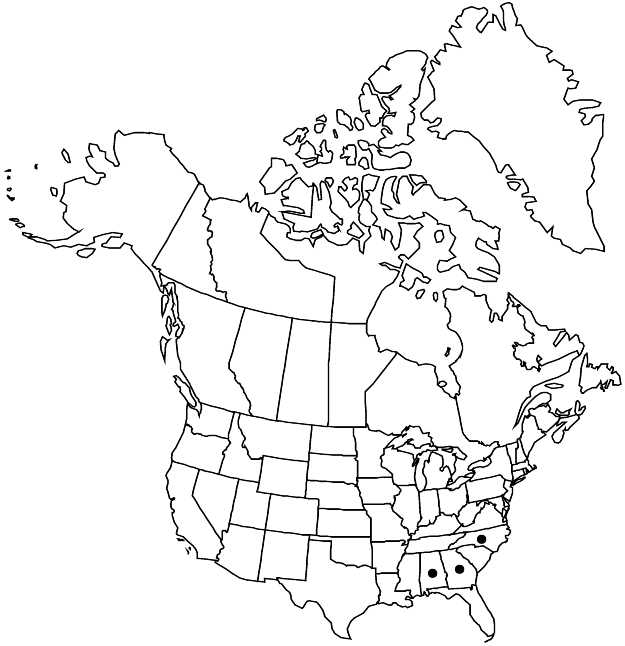Sarracenia oreophila
Bartonia 15: 8, plate 1, figs. 2, 3. 1933 ,.
Plants forming moderate clumps; rhizomes 1–1.5 cm diam. Pitchers marcescent, withering by mid summer, appearing with or just prior to flowers in 1 flush, erect, green to yellowish green, sometimes purple-veined or suffused with purple, without white areolae, 18–75 cm, firm, surfaces glabrous, wings 0.5–1 cm wide; orifice oval, 2–4.5 cm diam., rim green to red, flared and loosely revolute, often with slight indentation immediately distal to wing; hood recurved adaxially, held well beyond and covering orifice, yellow-green, infrequently suffused with purple, or purple reticulate-veined or purple-spotted at neck, without white areolae, broadly ovate-reniform, somewhat undulate, 2–8 × 2.5–8 cm, ± as long as wide, proximal margins weakly cordate such that opposite lobes reflex abaxially, not touching, neck (rarely red-blotched), constricted, 1–2 cm, margins revolute, apiculum 1–2 mm, adaxial surface with hairs to 0.5 mm. Phyllodia 3–5, usually more numerous than pitchers, decumbent to ascending, weakly to strongly falcate, 5–18 × 0.5–3.5 cm. Scapes 45–70 cm, shorter than pitchers; bracts (yellowish), 0.6–1.2 cm, (blunt apically). Flowers slightly ill-scented; sepals yellow, 3–5 × 2–3 cm; petals yellow, distal portion oblongelliptic to slightly obovate, 4–5.5 × 1.4–1.7 cm, margins entire; style disc yellow-green, 5–8.5 cm diam. Capsules 1.5–1.8 cm diam. Seeds 1.8–2 mm. 2n = 26.
Phenology: Flowering Apr–Jun.
Habitat: Seepage bogs, wet thickets, boggy stream banks, wet sands on riverbanks, seeps in rich oak woodlands
Elevation: 200-300 m
Distribution

Ala., Ga., N.C.
Discussion
Of conservation concern.
Sarracenia oreophila is rare and local, the first pitcher plant to be listed as federally endangered. Populations are threatened by fire suppression and land drainage. It occurs in isolated colonies in open wetlands and in shaded woods when fire or pasturing do not remove vegetation cover. In open, wet sites it makes impressive stands. It is the only Sarracenia to occur in rocky sandbar deposits along a major river in northeastern Alabama. It is known from central and northeastern Alabama, adjacent Georgia, and the mountains of North Carolina (Clay County). Early reports from Tennessee are not supported by specimen evidence. Sarracenia oreophila is able to survive drought better than other species of the genus. But, unlike the others, the pitchers do not last well into the summer and usually die down completely by mid July.
Sarracenia oreophila is in the Center for Plant Conservation’s National Collection of Endangered Plants.
Selected References
None.
Lower Taxa
"winged" is not a number."variable" is not a number."wide" is not a number.